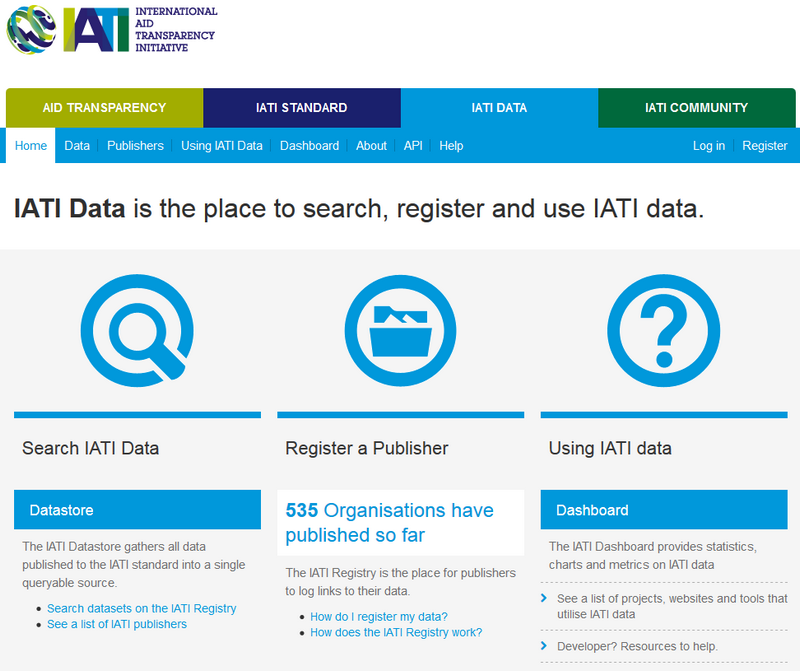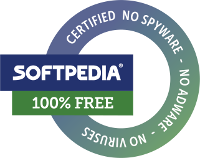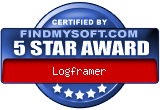IATI part II – Does IATI provides us with a better understanding of aid flows?
In the previous article we introduced the International Aid Transparency Initiative and why it was created. We also saw the birth of the IATI standard for information and how it evolved over the past couple of years. But how does this work? Who releases this information and where can you find it?
The central element in the IATI concept is the Registry. This is where you can find all the organisations that publish information in IATI format (the publishers), as well as their activities (projects or programmes; providing funding or credit; etc.). The registry does not contain the actual information about development and humanitarian aid initiatives. Instead, it provides a list of organisations and for each organisation a list of the (XML) documents they have created and the location where you can download them. The actual IATI documents aren’t stored in the IATI Registry but can be found on the websites of the different government agencies, NGOs, volunteer groups, etc. that have joined the IATI initiative. While anyone can produce and share IATI documents, the Registry is what enables people or organisations all over the world to find that information.

The Registry is the foundation of IATI and as such it allows you to find information. However, hopping from one website to the other to open IATI documents can be tedious and each file will only tell you what that specific organisation does. To get an overview of what is done by different donor countries or what happens in a specific country or region (activities of different organisations), you can use the Datastore. The Datastore uses internet robots that visit the websites of the registered organisations, read the information from their IATI documents and bring it all together in a database that you can query.
Another instrument to explore IATI data in a more visual way is D-portal. This tool is still in a development phase and tries to explore the different possibilities to learn from the IATI data.
IATI's goal is that any person or organisation would be able to understand what is happening in a certain country or area at a given time, who is doing what and where the funds are coming from. Ideally, you would be able to follow the aid streams from donor countries and organisations via intermediary NGOs or other aid actors to their final destinations. However at the moment we’re still far from this goal.
First of all, there are still many gaps in the overall picture. Although there is a growing number of (donor) organisations that publish their data, for now it’s only a small percentage of the overall aid industry. Also every organisation publishes what they are doing. So if you have donor A that funds NGO B who sends it to partner NGO C who then uses it to build hospitals, you only get a complete picture if all three organisations that are involved participate in IATI and publish their data. If A and C do but B doesn’t, there’s a gap. When I was at a presentation about IATI two years ago I asked how many publishers come from donor countries and how many from receiving countries. The answer was that about 80% of participating organisations come from donor countries where publication was obliged, about 10% for receiving countries and 10% from other countries. So you’ll find quite a lot of information about government agencies and NGOs from rich countries but very little from the receiving countries. One important reason for this situation is that in a number of donor countries (UK, Finland, the Netherlands…) NGOs and other aid actors are obliged by law to publish IATI files.
Also there is no minimum standard as to the content or the quality of the actual IATI documents. So an organisation may publish documents at regular intervals, but that doesn’t mean there is a lot of information to be found in those files. There are many IATI activity files that contain little more than the title, duration and overall budget of the project.
A key element in the financial transparency of IATI are the transactions: in every IATI activity file there are a number of transactions from the organisation that publishes the data to other organisations. Transactions are typically grants or subsidies but can also be credits and repayments or other types of financial flows. As each organisation has its own unique IATI identifier, you can see how money flows from one organisation to another. The identifiers should allow you to trace money from one organisation to the other.
However you must use a lot of caution when you use these figures. For one thing the transferring and the recipient organisation may register these transfers in different ways (taking or not taking into account administrative costs for example). They may group various effective transactions in one reported transaction at the end of the year to make reporting easier. And most importantly: it is not because a transaction is made in a specific year that all this money is also spent during that same year. So it is important to understand that IATI is not a global bookkeeping system for international aid. You can’t simply add up figures of various projects in recipient countries and expect them to correspond with the total transfers that the donor countries have reported in a given year.
So what a researcher, journalist or interested citizen can expect is to get a clearer picture based on indicative figures – if the information is indeed available (no gaps) and sufficiently detailed. From the side of the recipient countries, if a mayor or politician wants to find out what organisation X is actually doing on their territory (because sadly NGOs don’t find it necessary to inform local authorities) it can be quite the task to actually find information. That is because at the moment people are mainly obsessed by getting their data published, so you have a number of tools to create IATI files. But there aren’t so many tools that allow you to analyse and make sense of it all – especially if you don’t have the technical know-how to query a database.
In this IATI shows that it is still a relatively young system – although there is progress in this respect. But we can only expect improvement if better analysis tools are developed and if more and more organisations start contributing to global transparency – on the condition that they also provide quality information. What it takes for an organisation to join this global quest for aid transparency we’ll see in the next article.





Add new comment